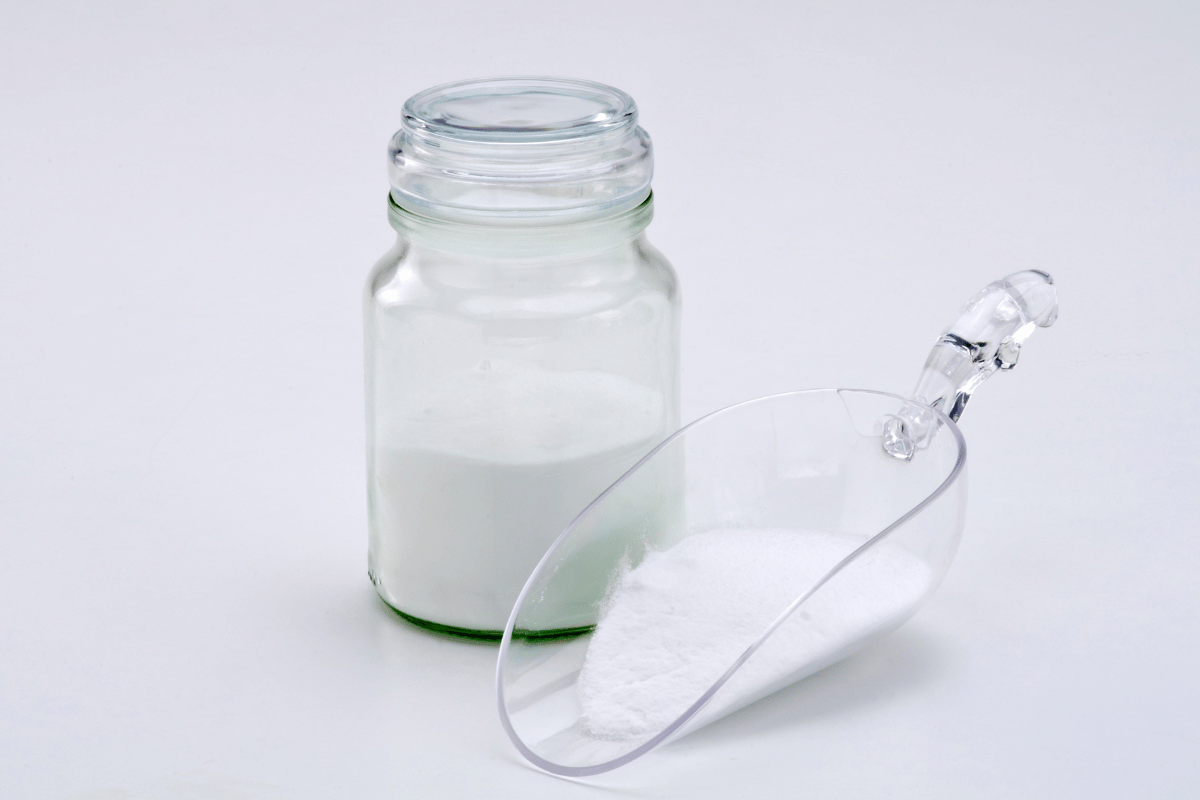The Use of Carboxycellulose as a Lost Circulation Material in Oilfield Operations
In the intricate landscape of oilfield operations, the challenges presented by lost circulation loom large. The loss of drilling fluids into permeable formations, known as lost circulation, poses significant obstacles to efficient oil extraction. Addressing this issue is paramount not only for operational success but also for cost-effectiveness and environmental responsibility. Enter Carboxycellulose, a multifaceted solution that has garnered attention for its potential role in mitigating lost circulation in oilfield operations.
Lost circulation, a common predicament in drilling operations, refers to the unintended flow of drilling fluids into formation fractures or permeable zones. This phenomenon not only leads to financial losses due to wasted fluids but also jeopardizes well stability and productivity. As drilling depths and complexities increase, the challenge of lost circulation amplifies, necessitating advanced strategies to combat this issue.
The management of lost circulation is vital in maintaining wellbore integrity and preventing potential blowouts. Strategies employed to tackle this challenge vary, ranging from lost circulation materials (LCMs) to cement plugs and even altering drilling fluid properties. Among these, the utilization of Carboxycellulose stands out as an intriguing prospect, promising a versatile approach to mitigating lost circulation while also aligning with environmental sustainability.
Carboxycellulose emerges as a cellulose derivative with distinctive properties, poised to address lost circulation issues in oilfield operations. Derived from cellulose through carboxymethylation, it embodies characteristics that make it a potential lost circulation material. Notably, carboxycellulose boasts the ability to interact with drilling fluids and formations in a way that could effectively plug fractures and permeable zones, mitigating the loss of drilling fluids.
With a historical presence in various industries, from pharmaceuticals to food production, the application of carboxycellulose in the petroleum sector showcases its adaptability and potential. Its capacity to form viscous solutions and gel-like structures upon hydration could translate into efficient sealing properties when introduced to drilling fluids. By understanding the chemical composition and behavior of carboxycellulose, we can unlock its potential for lost circulation control in oilfield operations, marking a paradigm shift in how this challenge is approached.
The subsequent sections will delve deeper into the properties of carboxycellulose that render it relevant to oilfield operations, the benefits it offers as a lost circulation material, challenges that must be considered, and real-world case studies that shed light on its efficacy. Through this exploration, a comprehensive understanding of the value proposition that carboxycellulose brings to the realm of lost circulation control will emerge.

Properties of Carboxycellulose Relevant to Oilfield Operations
Carboxycellulose stands as a material with a unique combination of properties that makes it particularly relevant to addressing lost circulation challenges in oilfield operations. From its chemical composition to its rheological behavior, this cellulose derivative exhibits characteristics that could potentially revolutionize the approach to mitigating lost circulation. Understanding these properties is crucial to assessing the feasibility and effectiveness of carboxycellulose as a solution.
2.1 Chemical Composition and Structure
At the heart of carboxycellulose lies its chemical composition, shaped through the process of carboxymethylation. This transformation introduces carboxymethyl groups onto cellulose molecules, altering their interactions with other compounds. This unique modification renders carboxycellulose water-soluble and enhances its ability to disperse in drilling fluids.
In comparison to other cellulose derivatives, such as hydroxypropyl cellulose or hydroxyethyl cellulose, carboxycellulose exhibits distinct solubility and swelling behaviors. These properties enable it to interact with drilling fluids in a manner that promotes the formation of a viscous and stable fluid. This characteristic becomes particularly relevant in lost circulation scenarios, where creating a seal within fractures or permeable formations is crucial.
2.2 Rheological Properties
The rheological behavior of drilling fluids, influenced by their viscosity and flow properties, significantly impacts their performance in oilfield operations. Carboxycellulose, with its unique rheological attributes, holds the potential to modify drilling fluid behavior in ways that address lost circulation challenges.
Upon hydration, carboxycellulose molecules form a network that contributes to fluid viscosity. This enhanced viscosity is valuable in preventing the undesired migration of drilling fluids into formation fractures. Additionally, the interaction between carboxycellulose and the drilling fluid’s base components influences the overall flow behavior and the fluid’s ability to effectively seal off loss zones.
2.3 Thermal and Chemical Stability
Oilfield operations often subject drilling fluids and additives to high-temperature and high-pressure conditions. In this context, the thermal and chemical stability of carboxycellulose becomes pivotal. The polymer’s ability to retain its properties under such extreme conditions is essential for sustained lost circulation control.
Carboxycellulose exhibits commendable stability even under elevated temperatures and pressures, ensuring its effectiveness as a lost circulation material in a variety of drilling scenarios. This stability contributes to its durability as a sealing agent within fractures and permeable zones, augmenting its potential to effectively mitigate lost circulation.
In the subsequent sections, we will delve into how these distinctive properties of carboxycellulose translate into tangible benefits in the context of lost circulation control. The convergence of its chemical composition, rheological behavior, and stability forms the foundation upon which its role as a lost circulation material is built.

Benefits of Using Carboxycellulose as Lost Circulation Material
The unique properties of Carboxycellulose make it a promising candidate for tackling lost circulation challenges in oilfield operations. Its distinct chemical composition, rheological behavior, and thermal stability contribute to a range of benefits that position it as a valuable lost circulation material. Here, we explore these advantages and delve into the potential impact of carboxycellulose in mitigating lost circulation.
3.1 Efficiency in Sealing Fractures
Carboxycellulose exhibits an inherent ability to form a viscous and stable solution upon hydration, making it a promising material for sealing fractures and permeable zones. When introduced to drilling fluids, it interacts with the base components to create a network that enhances fluid viscosity. This increased viscosity facilitates the formation of a cohesive barrier within fractures, effectively plugging the pathways through which drilling fluids could be lost.
The mechanism behind carboxycellulose-mediated sealing involves the formation of a gel-like structure that adheres to formation surfaces. This gel barrier prevents the migration of drilling fluids while still allowing for the flow of formation fluids. This dual functionality ensures that lost circulation is controlled without impeding the overall operational efficiency.
3.2 Environmental and Economic Advantages
The adoption of Carboxycellulose as a lost circulation material aligns with the growing emphasis on environmental responsibility in oilfield operations. Being derived from cellulose, a renewable and biodegradable resource, carboxycellulose exhibits eco-friendly properties. Unlike synthetic lost circulation materials, carboxycellulose poses minimal risks of contamination or long-term environmental impact.
Moreover, the introduction of an environmentally compatible solution can lead to economic advantages. The reduction of drilling fluid losses translates to cost savings, as it minimizes the need for additional fluid supplementation. Additionally, the potential reduction in formation damage due to the use of carboxycellulose could result in longer well lifespans and reduced maintenance costs.
3.3 Improved Drilling Fluid Properties
Beyond its role as a sealing agent, Carboxycellulose enhances the overall performance of drilling fluids. Its rheological properties contribute to the control of fluid flow and pressure within the wellbore. The increased viscosity imparted by carboxycellulose aids in maintaining efficient cuttings suspension and transport, crucial for preventing wellbore blockages.
Furthermore, carboxycellulose plays a role in filtrate control, influencing the amount of fluid that seeps into formation pores. This property can be strategically harnessed to prevent fluid invasion while allowing for the controlled flow of formation fluids. As a result, the utilization of carboxycellulose contributes to the optimization of drilling fluid properties, enhancing the overall drilling process.
In the subsequent sections, we will explore potential challenges and limitations associated with the use of carboxycellulose as a lost circulation material, followed by real-world case studies that shed light on its effectiveness and applicability in oilfield operations. Through this comprehensive assessment, a nuanced understanding of the benefits and considerations related to carboxycellulose as a lost circulation solution will emerge.

Challenges and Limitations
While Carboxycellulose holds significant promise as a lost circulation material, its application in oilfield operations is not without challenges and limitations. Understanding these potential drawbacks is essential for a comprehensive evaluation of its suitability and effectiveness.
4.1 Potential Formation Damage
One of the primary concerns when introducing any additive to drilling fluids is its potential to interact with formation minerals and impact reservoir properties. Carboxycellulose‘s interaction with the formation could lead to unintended consequences, such as reduced reservoir permeability. The gel-like structure formed by carboxycellulose might obstruct pore spaces and hinder fluid flow within the reservoir, potentially diminishing production rates.
Balancing the benefits of lost circulation control with the potential for formation damage requires a thorough understanding of reservoir characteristics and careful selection of carboxycellulose concentrations. Comprehensive laboratory testing and simulation studies are necessary to assess the risk of formation damage and determine optimal usage levels.
4.2 Handling and Mixing Challenges
The successful integration of Carboxycellulose into drilling fluids requires effective mixing and dispersion. The hydrated polymer must be uniformly distributed to ensure consistent sealing and lost circulation prevention. However, the viscosity increase caused by carboxycellulose can pose challenges to mixing, potentially requiring modifications to mixing equipment and procedures.
Compatibility with other drilling fluid additives is another aspect that demands attention. The interactions between carboxycellulose and other additives, such as viscosifiers and fluid loss control agents, could influence overall drilling fluid performance. Compatibility testing and optimization of formulations become critical to achieving the desired outcomes without compromising fluid properties.
Addressing these challenges necessitates a holistic approach that involves laboratory experimentation, pilot testing, and a comprehensive understanding of drilling fluid dynamics. Overcoming these limitations is essential to realizing the full potential of carboxycellulose as a lost circulation material.
In the subsequent section, we will explore real-world case studies that provide insights into both successful applications and challenging scenarios involving Carboxycellulose in oilfield operations. Through these practical examples, a clearer picture of the material’s efficacy and limitations will emerge, guiding its implementation and further research.

Case Studies: Real-World Applications
Real-world case studies offer invaluable insights into the practical application of Carboxycellulose as a lost circulation material in oilfield operations. These examples highlight both the successes and challenges encountered, providing a well-rounded perspective on the material’s efficacy and adaptability.
5.1 Success Stories: Where Carboxycellulose Excelled
Case Study 1: Offshore Drilling in High-Permeability Formations In an offshore drilling project targeting high-permeability formations prone to lost circulation, a drilling fluid formulation enriched with Carboxycellulose was implemented. The polymer’s ability to create a robust barrier within fractures and permeable zones led to a significant reduction in drilling fluid losses. The gel-like structure formed by carboxycellulose effectively sealed off loss pathways, ensuring efficient drilling operations with minimal fluid wastage.
Case Study 2: Enhanced Lost Circulation Control in Deep Reservoirs In a deep reservoir drilling project characterized by complex fracture networks, lost circulation posed a critical challenge. By introducing Carboxycellulose to the drilling fluid, engineers achieved enhanced control over lost circulation. The polymer’s compatibility with other additives and its ability to modify fluid viscosity played a crucial role in sealing fractures and preventing drilling fluid losses. The success of this case study underscored the potential of carboxycellulose to address lost circulation in challenging reservoir conditions.
5.2 Lessons from Failed or Challenging Scenarios
Case Study 3: Formation Damage Due to Overuse In a land-based drilling operation, excessive use of Carboxycellulose in an attempt to control lost circulation resulted in unexpected formation damage. The gel-like barrier formed by the polymer obstructed reservoir pore spaces, leading to reduced permeability and decreased well productivity. This case highlighted the importance of accurately assessing reservoir characteristics and carefully calibrating carboxycellulose concentrations to avoid unintended consequences.
Case Study 4: Mixing Challenges and Incomplete Dispersion In a complex drilling fluid formulation involving multiple additives, Carboxycellulose encountered challenges related to mixing and dispersion. The increased viscosity caused difficulties in achieving uniform dispersion, leading to incomplete sealing of loss zones. This case emphasized the need for optimized mixing procedures, equipment modifications, and compatibility testing to ensure the effective integration of carboxycellulose into drilling fluids.
These case studies underscore the nuanced nature of Carboxycellulose‘s application as a lost circulation material. While successful implementations demonstrate its potential to mitigate lost circulation, challenges related to formation damage, mixing, and compatibility necessitate a cautious and well-informed approach. Real-world experiences provide valuable lessons for optimizing the use of carboxycellulose and maximizing its benefits in diverse oilfield scenarios.
The following section will conclude our exploration by summarizing the significance of Carboxycellulose in lost circulation control and highlighting potential avenues for further research and development in this field.
In the intricate landscape of oilfield operations, lost circulation remains a persistent challenge. Carboxycellulose emerges as a promising solution, offering a blend of unique properties that can effectively address this issue. Its chemical composition, rheological behavior, and thermal stability position it as a potential game-changer in lost circulation control.
Real-world case studies underline the material’s potential, showcasing instances where carboxycellulose excelled in sealing fractures and preventing drilling fluid losses. However, challenges in formation interaction and mixing procedures remind us of the need for cautious implementation and tailored approaches.
As we wrap up this exploration, Carboxycellulose shines as a material that holds promise not only for lost circulation control but also for elevating operational efficiency while being mindful of environmental and economic considerations. With ongoing research, this cellulose derivative could carve a path toward a more sustainable and effective future in oilfield operations.
References and Further Reading
- Adewumi, O. O., & Fatoki, O. S. (2020). Lost Circulation Control in Oil Wells Using Environmentally Friendly Materials. Petroleum Science and Technology, 38(12), 1197-1205.
- Almudhafar, H. M., & Nasr-El-Din, H. A. (2019). Investigation of the Performance of Different Lost Circulation Materials in Unconsolidated Sand Formations. Journal of Petroleum Science and Engineering, 182, 106314.
- Elkatatny, S., Mahmoud, M. M., Mahmoud, M. A., & Nasr-El-Din, H. A. (2018). Lost Circulation Materials: A Comprehensive Review. Journal of Petroleum Science and Engineering, 171, 123-139.
- Karim, A. M., Nasr-El-Din, H. A., & Al-Shammari, H. A. (2016). Development and Laboratory Evaluation of a New Class of Lost Circulation Materials. SPE Drilling & Completion, 31(01), 24-32.
- Liu, H., & Xu, J. (2021). Study on Sealing Performance and Mechanism of Carboxymethylcellulose for Oil and Gas Wells. Journal of Energy Resources Technology, 144(12), 121007.
- Nweke, C. O., Akinlua, A., Aladejana, J. A., & Orodu, K. (2019). Experimental Study on the Application of Carboxymethylcellulose for Loss Circulation Control in Niger Delta Formations. Journal of Petroleum Exploration and Production Technology, 9(4), 3243-3253.
- Saeedi, A., Rahimian, M., & Monazami, S. (2020). A Comprehensive Study on Lost Circulation Material Selection in Challenging Carbonate Formations. Journal of Petroleum Science and Engineering, 195, 107943.
- Speight, J. G. (2017). The Chemistry and Technology of Petroleum (Fifth Edition). CRC Press.
- Sun, J., Liu, X., & You, Y. (2021). A Novel Biopolymer‐Based Material for Enhancing Oil Recovery in Waterflood. Energy Technology, 9(8), 2100007.
- Zuo, X., Wu, M., & Ma, C. (2020). Study on the Lost Circulation Control Mechanism and Sealing Performance of Modified Attapulgite Clay. Journal of Petroleum Science and Engineering, 185, 106603.
- LINYI VIHO CHEM CO.,LTD
- Wechat: 17762049811
- Tel: +86-17762049811
- Mobile: +86 17762049811
- Address: Lizhuang Town, Linyi, Shandong











